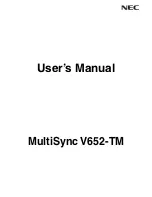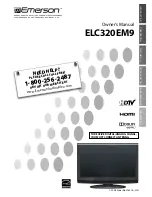
3
(English)
EN
Interpretation
1. 3M Petrifilm RYM Plates can be counted using a standard colony counter or other illuminated magnifier. Gridlines are visible with the use of a
backlight to assist with estimated enumeration.
2. Do not count colonies on the foam dam since they are removed from the nutrient medium.
3. To differentiate yeast and mold colonies on the 3M Petrifilm RYM Plate, look for one or more of the following characteristics:
YEAST
MOLD
Small colonies
Large colonies
Colonies have defined edges
Colonies have diffuse edges
Pink/tan to blue/green in color
Blue/green to variable upon prolonged incubation
Colonies appear raised (3 dimensional)
Colonies appear flat
Colonies have a uniform color
Colonies have a dark center with diffused edge
4. Read yeast and mold results at 48 hours. Certain slower growing yeasts and molds may appear faint at 48 hours. To enhance interpretation
of these molds allow for an additional 12 hours of incubation time. If a 60 hour time-point for interpretation is not convenient, extending the
incubation time to 72 hours is an acceptable alternative.
5. The circular growth area is approximately 30 cm
2
. 3M Petrifilm RYM Plates containing greater than 150 colonies can either be estimated or
recorded as Too Numerous To Count (TNTC). Estimation can be done by counting the number of colonies in one or more representative squares
and determining the average number per square. The average number can be multiplied by 30 to determine the estimated count per plate. If a
more accurate count is required, the sample will need to be retested at higher dilutions. When the sample contains substantial amounts of mold,
depending on the type of mold, the upper countable limit may be lowered at user discretion.
6. Food samples may occasionally show interference on the 3M Petrifilm RYM Plates, for example:
a) a uniform blue background color (often seen from the organisms used in cultured products) these should not be counted as TNTC.
b) intense, pinpoint blue specs (often seen with spices or granulated products).
7. When necessary, colonies may be isolated for further identification. Lift the top film and pick the colony from the gel.
Specific Instructions for Validated Methods
AOAC® Official Methods (OMA)
SM
#2014.05
AOAC® Research Institute (RI) Performance Tested Method (PTM)
SM
#121301
In AOAC OMA and PTM studies, the 3M Petrifilm RYM Plate method was found to be equivalent to or better than the average log counts of the
ISO 21527:2008 parts 1 and 2 and to the FDA BAM Chapter 18 reference methods at 48 and 60 hours.
Scope of Validation:
Yogurt, frozen bread dough, fermented salami, sour cream, ready-made pie, frozen ground beef patties, almonds, sandwiches, sliced apples, and
dehydrated soup.
Incubation:
Incubate 3M Petrifilm RYM Plates between 48 and 60 hours at 25°C +/-1 °C or 28°C +/-1°C.
Interpretation:
Plates containing greater than 150 colonies can either be estimated or recorded at too numerous to count (TNTC). Estimation can be done by
counting the number of colonies in one or more representative squares and determining the average number per square. The average number can be
multiplied by 30 to determine the estimated count per plate. If a more accurate count is required, the sample can be retested at higher dilutions.
NF Validation by AFNOR Certification:
NF Validation certified method in compliance with ISO 16140
4
in comparison to 21527 part 1 and part 2
5
Use the following details when implementing the above instructions for Use:
Scope of the validation:
All human food products, animal feed and environmental products (primary production samples excepted)
Sample preparation:
Use only ISO listed diluents
6
Incubation:
Incubate 3M Petrifilm RYM Plates between 60 and 72 hours at 25°C +/-1 °C or 28°C +/-1°C.
The plates can be stored in the incubator up to 5 days.





































